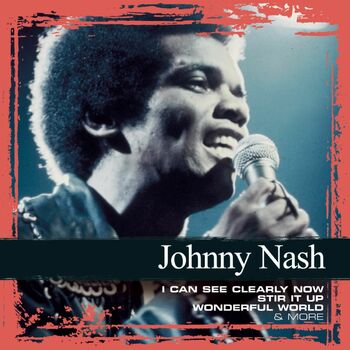Johnny Nash I Can See Clearly Now Download
Oct 07, 2020 The Nash hit, released after a tumultuous period in America, has been called ‘an anthem for troubled times.’ American pop and reggae singer-songwriter Johnny Nash has died. Nash was best known for the 1972 hit song, “I Can See Clearly Now.”. Print and Download I Can See Clearly Now sheet music. Tranposable music notes for Beginner Piano sheet music by Johnny Nash Johnny Nash: Hal Leonard - Digital Sheet Music at Sheet Music Plus. I can see clearly now Johnny Nash Intro: D G D G D G D I can see G clearly now the D rain is gone D I can see all G obstacles A in my way D Gone are the G dark clouds that D had me blind It’s gonna be a C bright G bright sun shiny D day It’s gonna be a C bright G bright sun shiny D day. I Can See Clearly Now. More by Johnny Nash. The Best of Johnny Nash 1991 Collections: Johnny Nash 2006 The Essential Johnny Nash 2017 I Can See Clearly Now (Expanded Edition) 1972 Best Of The Early Years 2011 Johnny Nash. Johnny Nash, best known for his 1972 hit 'I Can See Clearly Now,' died Tuesday morning, his son, John Nash, told CNN. He was 80 years old.
© Courtesy Everett CollectionJohnny Nash, the pop and reggae singer whose “I Can See Clearly Now” topped the charts in the U.S. and UK in 1972, died Tuesday. He was 80.
His son, Johnny Nash Jr., confirmed the death to the Associated Press and said his father died of natural causes, at home in Houston. No specific cause of death was given.
Although he might be thought of as a one-hit wonder by many, Nash’s website refers to “I Can See Clearly Now” as the singer’s “comeback hit,” since the then-32-year-old had been recording, and occasionally charting, since the late 1950s, starting when he was 17.
Born in Houston, Texas, John Lester Nash, Jr. grew up singing in church. He happened upon the style that would provide his greatest success when he traveled to Jamaica in 1968, where he met Bob Marley, Peter Tosh and Bunny Livingston. He financed their recordings for his own label, JAD, without success. However, his move into the genre himself with “I Can See Clearly Now” — which he wrote and produced himself — was a huge success, going gold and providing him a four-week run at No. 1 in the States.


“I Can See Clearly Now” became a hit again in 1993 when Jimmy Cliff recorded it for the soundtrack of “Cool Runnings”; it reached No. 18 and was the Jamaican musician’s highest-charting U.S. song.
Others who’ve covered the tune on record include Ray Charles, Gladys Knight and the Pips, Grace VanderWaal, Hothouse Flowers and the punk band Screeching Weasel. It was more recently repopularized in US Bank commercials.
It’s arguable whether “I Can See Clearly Now” was a true reggae song, but his interest in the genre was clear and true, and he even covered three songs by his friend Bob Marley on the album that came out under that title — co-writing a fourth with him, “You Poured Sugar on Me.”
“Johnny loved reggae,” his business partner, Danny Sims, told the Houston Chronicle in 2012. “And he loved Bob and the guys. He taught Bob how to sing on the mic, and they taught Johnny how to play the reggae rhythm.”
As an independent label chief with JAD, aside from his reggae interests, Nash was the first to sign the group the Cowsills.
Nash also acted early in his career, appearing in a 1959 screen version of the Black-themed play “Take a Giant Step,” followed by a role the following year in “Key Witness,” in which he appeared alongside Dennis Hopper He sang the theme song for a 1960s cartoon show, “The Mighty Hercules.”
Capitalizing on regular TV appearances he made in Houston starting at age 13, he released his first single, “A Teenager Sings the Blues,” in 1956. It did not chart, but the following year, “A Very Special Love” did, reaching No. 27 nationally. After a series of even more minor hits, he finally reached the top 10 in 1968 with “Hold Me Tight,” which peaked at No. 5. His recording career hit the commercial doldrums again until “I Can See Clearly Now” made him a household name. He had one more top 20 hit after that the following year with a cover of Marley’s “Stir It Up.”
His last studio album, “Here Again,” appeared in 1986 and produced a Swedish hit, “Rock Me Baby.”
In 1993 he built the Johnny Nash Indoor Arena in Houston, which hosted rodeos before becoming a BMX track in 2002.
I Can See Clearly Now Wiki
Nash had turned down all interview requests for many years. “I got the impression he was pretty much retired and not very interested in reliving the past,” said Andy Bradley, an engineer with SugarHill Studios, where Nash was said to be working on transferring his old tapes in recent years. “But he was polite about it. He’s an extremely nice man and one of my favorite people I’ve ever met.” Added Sims in that same 2012 Chronicle story — in which a reporter tried and failed to track down Nash: “He made this decision and no one could talk him out of it. He walked away and stayed away. That’s not easy to do.”

Johnny Nash I Can See Clearly Now Download Windows 10
Besides his son, Nash is also survived by his daughter, Monica, and wife, Carli Nash.
